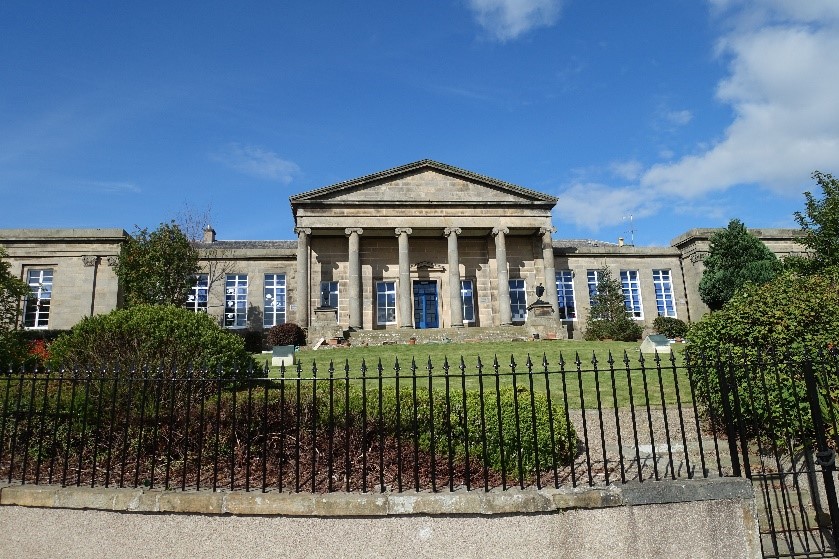Crossing the Deveron Bridge, what first attracted me to Banff was the prospect of the Old Banff Academy facing east on a rise above the High Street, overlooking the approach from the bridge. The Neo Greek, single storey, 15-bay classical frontage by William Robertson (1837-8) of Elgin, spoke of Banff as a town which valued culture and learning, as indeed it does. It also spoke of a darker side to Banff’s history.
The 1837-8 building was financed by money left by Banffer, James Wilson, ‘late of Banff, in the island of Grenada, a charitable fund for the good of Banff … expended on the school’. Mr. Wilson died in 1799 at the height of the slave trade in the Caribbean; it is likely that his legacy was directly or indirectly linked to the enslavement of Africans on the plantations in Grenada. It is well known that many North East families owned plantations in the Caribbean in the 18th & 19th C. One such was another Banffer, James Gardiner(d.1825), owner of the Swanswick plantation in Jamaica.
Mr. Wilson’s will directed that the whole of his stock, after the decease of certain annuitants, be given to the magistrates of Banff, to be used for charitable purposes, according to their discretion. The estate was sufficient for the construction of an infant school, a free school on the Madras system, and class-rooms for the grammar school, as well as, a library and a museum.
When the annuitants died, their descendants brought a case declaring the will invalid. The case went to the House of Lords, which ruled in favour of the magistrates and so in 1838 Banff got the bequest and the town got its Academy. By coincidence all enslaved people in Grenada were freed by 1 August 1838.

 BPHSMOB
BPHSMOB